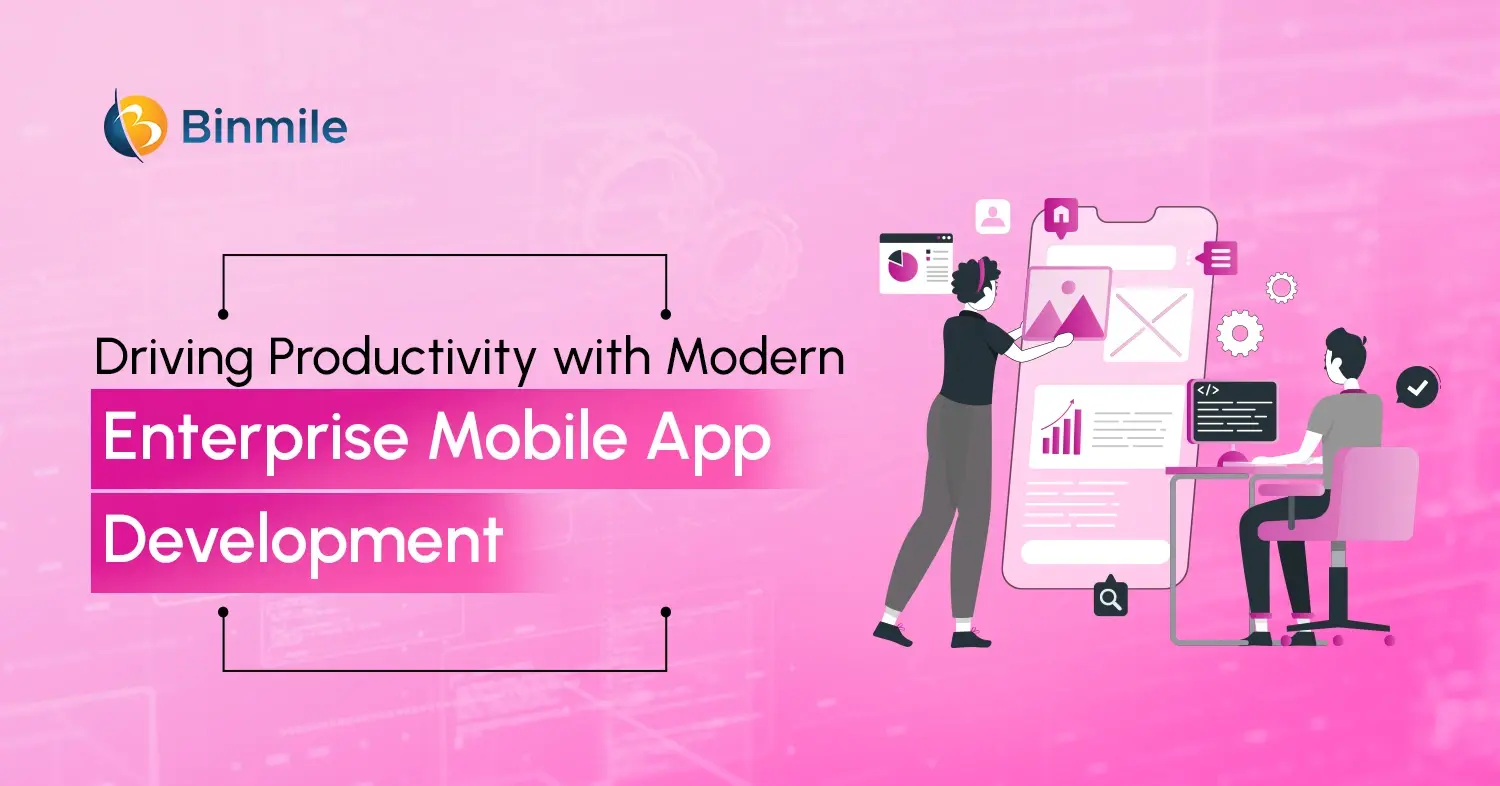The app development market is overcrowded with several kinds of apps, to stand out you need apps that offer great user experience while improving development speed, lowering scalability cost, and enhancing security. The right tech stack for app development can help you achieve this. After all, the architecture of an app (its frontend, backend, and database layers) plays the most important role in defining its user experience, performance, and overall success.
What’s a Tech Stack?
It’s a collection of tools for building software or applications. Full-stack means a mix of hardware, software, operating systems, servers, databases, and programming languages that developers use to handle back-end and front-end web development. Mobile and web app developers use many tools, programming languages, and frameworks to offer end users the best app experience. Moreover, most coding languages come with performance attributes and limitations. The technology stack is essential for assessing the overall strengths and weaknesses of a web or mobile application.
With so many options out there, choosing an appropriate tech stack for mobile app development can be overwhelming. Learn more about the components of the tech stack in the form of backend and frontend options. Also, know how to pick the appropriate app development tech stack for your next project.
Top Essential Tech Stack for App Development
Call it infrastructure or ecosystem technology stacks are a set of various technologies that work together for some purpose for systems. Programming languages, frameworks, databases, and server providers are popular technology stack examples. Frontend and backend are two prime aspects of a tech stack. The front end is the visible side of the app where user interactions take place. Contrary to this, the backend is the invisible or hidden part of the app that hosts user actions. Both the components are related through a middleware layer and interact through the internet. The layer covers CMS (content management systems), web servers, and many tools to support web app development.

1: Tech Stack for Web Apps
The choice of backend depends upon the level of to-be-displayed dynamic content. On the other hand, the front-end choice broadly relates to the to-be-delivered user experience. There are several popular technology stacks for application development, each of which has advantages and disadvantages. Some of the more well-liked choices are listed below:
1. LAMP (Linux, Apache, MySQL, PHP)
It’s highly suited for technology stack for web application and web development. LAMP OS is Linux and the web server is Apache. MySQL is the database management system, and the programming language is PHP.
Key Features:
- Perfect for apps that need a database and dynamic content
- An affordable alternative for many enterprises due to the mix of open-source software
- A sizable developer community using these technologies assures that there are plenty of resources and assistance accessible for development.
2. MEAN (MongoDB, Express.js, Angular, Node.s)
This popular technology stack is built on JavaScript. Angular is the front-end framework, the database management system is MongoDB, the web application framework is Express.js, and the runtime environment is Node.js.
Key Features:
- It offers a full-stack JavaScript solution
- Simple development process
- Easily manage the codebase using a single language throughout the stack by MEAN stack application developers.
3. Ruby on Rails
This top web development framework is crow-favorite for being easy to use as it offers a set of conventions and tools that make it simple to create web apps with quick turn-around time.
Key Features:
- It offers a basic, uncomplicated development process
- Accelerates development by automating common tasks based on predefined conventions.
- Scalability and security, make it a strong option for applications that must develop over time while remaining safe.
4. Dot Net (.NET)
This tech stack is often used for Windows-based apps, moreover, the .NET framework consists of many tools and modules to make it simple to develop, share, and manage applications.
Key Features:
- Dependable and scalable solution for applications requiring a high-performance level.
- The framework is a smart choice for businesses looking for a solid solution because it has a vast development community and a plethora of tools.
5. JavaScript
JavaScript has emerged as a versatile language for building various applications beyond web development. It’s employed in creating desktop, mobile, and server-side applications.
Key Features:
- Build apps for web, mobile, and desktop.
- Extensive support and resources are available.
- Quick prototyping and iteration.
6. Python
Python, this language is a preferred choice due to its readability and simplicity, it also offers rapid application development. It’s used in various domains, including web, data science, and machine learning.
Key Features:
- It offers readability and maintainability, therefore, therefore a clean code structure.
- It comes with exceptional versatility and therefore, is suitable for various app types.
- A large and supportive community, along with extensive libraries and frameworks.
7. C#
It’s a powerful, object-oriented language primarily used for Windows applications but has expanded its reach to other platforms. It’s known for its performance and scalability.
Key Features:
- Efficient for resource-intensive applications.
- Object-oriented that enhances code organization and reusability.
- It offers cross-platform development with .NET Core and builds apps for various platforms.
Also Read: Database for Web Apps
2: Mobile App Tech Stack
When it comes to mobile app development, app development enthusiasts need to examine tech stack choice closely. The adoption of a mobile app depends on iOS, Android, and cross-platform app development. There are three main approaches to building mobile apps:
- Native Apps: Optimized for specific platforms (iOS or Android), best performance and user experience.
- Hybrid Apps: Single codebase for multiple platforms, faster development, potential performance trade-offs.
- Cross-platform Apps: Single codebase for multiple platforms, balance between development speed and performance.
1. Native Development:
- Android: Java or Kotlin for development, Android Studio as IDE.
- iOS: Objective-C or Swift for development, Xcode or AppCode as IDE.
2. Hybrid App Development:
React Native: JavaScript framework, creates native-like apps, hot reloading for faster development.
3. Cross-platform App Development:
- Flutter: Google’s UI toolkit, uses Dart language, known for fast development and beautiful UI.
- Xamarin: C# based, uses .NET, and offers strong integration with other Microsoft tools.
- Ionic: HTML, CSS, and JavaScript-based uses web technologies for app development.
- NativeScript: JavaScript-based, direct access to native APIs.
Choose the perfect tech stack for your app and let our expert development services turn your vision into reality!
Mastering Tech Stack Selection: 5 Easy Steps for App Success
It is not easy to develop digital products as they come with lots of challenges. When it comes to finding the right app development partner, the challenge of technology stack selection for upcoming projects matters the most. Sticking to the right tech stack for apps be it mobile or web apps defines the success or failure of your project. Also, we like to share a guide on how much it costs to maintain an app.

1. Define Your App’s Requirements
It’s crucial to understand your app’s core functionalities, target audience platform, scalability, and security needs. This helps you find the right app development tech stack. Focus on:
- Core functionalities: Determine the primary actions users can perform within your app. What problem does it solve?
- Target audience: Identify your ideal users. Consider their technical proficiency, device preferences, and demographics.
- Platform: Decide whether your app will be web-based, mobile (iOS, Android, or both), or desktop.
- Scalability: Assess your app’s potential growth. Consider how it will handle increased user traffic and data volume.
- Security: Evaluate the sensitivity of the data your app handles. Determine the necessary security measures.
2. Assess Your Team’s Expertise
Matching your development team’s skills and experience plays a significant role in selecting the tech stack and successfully delivering the project.
- Core competencies: Identify the programming languages, frameworks, and platforms your team is proficient in.
- Skill gaps: Determine if your team needs to acquire new skills or hire additional resources.
- Team size: Assess if your team size is right to manage the project, not this not only streamlines development but also reduces costs.
3. Evaluate Technology Options
Once you understand your app’s requirements and your team’s capabilities, you can explore potential technology options.
- Backend: Choose databases (SQL or NoSQL), programming languages, and frameworks to handle server-side logic and data storage.
- Frontend: Select languages, frameworks, and libraries for building the user interface.
- Platform-specific: Decide between native, hybrid, or cross-platform development based on your target audience and performance needs.
- Cloud infrastructure: Evaluate cloud providers and services for hosting, scalability, and cost-efficiency.
4. Consider Performance and Scalability
A well-performing app is essential for user satisfaction, so prioritize performance and scalability to create a reliable and responsive app.
- Load testing: Simulate heavy user traffic to assess your tech stack’s performance under pressure.
- Performance benchmarks: Compare different options based on speed, responsiveness, and resource utilization.
- Scalability planning: Ensure your chosen technologies can accommodate future growth.
5. Evaluate Cost and Time-to-Market
Budget and time constraints are often critical factors in tech stack selection, striking the right balance of cost, time, and quality is essential for high-quality but cost-effective app development.
- Development costs: Consider the cost of licenses, tools, and developer salaries.
- Time-to-market: Evaluate how quickly you can develop and launch your app using different tech stacks.
- Maintenance costs: Factor in ongoing expenses for updates, support, and security.
Closing Statement
No doubt choosing the right top tech stack for app development plays a critical role in determining the success of your application. Remember that all tools and technologies target your project, but you have to pick only one technology to get the job done. So, go with a particular technology or device that suits your business and project needs directly. This way, you save more on app development costs, efforts, and time to market.
If you’re confused with the list of technologies and tools to start an app development project, we recommend seeking a professional top mobile app development company and know what is right for your next project! The company will help you pick up the right tech stack and get the highest value for your business. It’ll help you deliver potentially successful mobile apps or progressive web apps that offer robust performance, security, and scalability.









